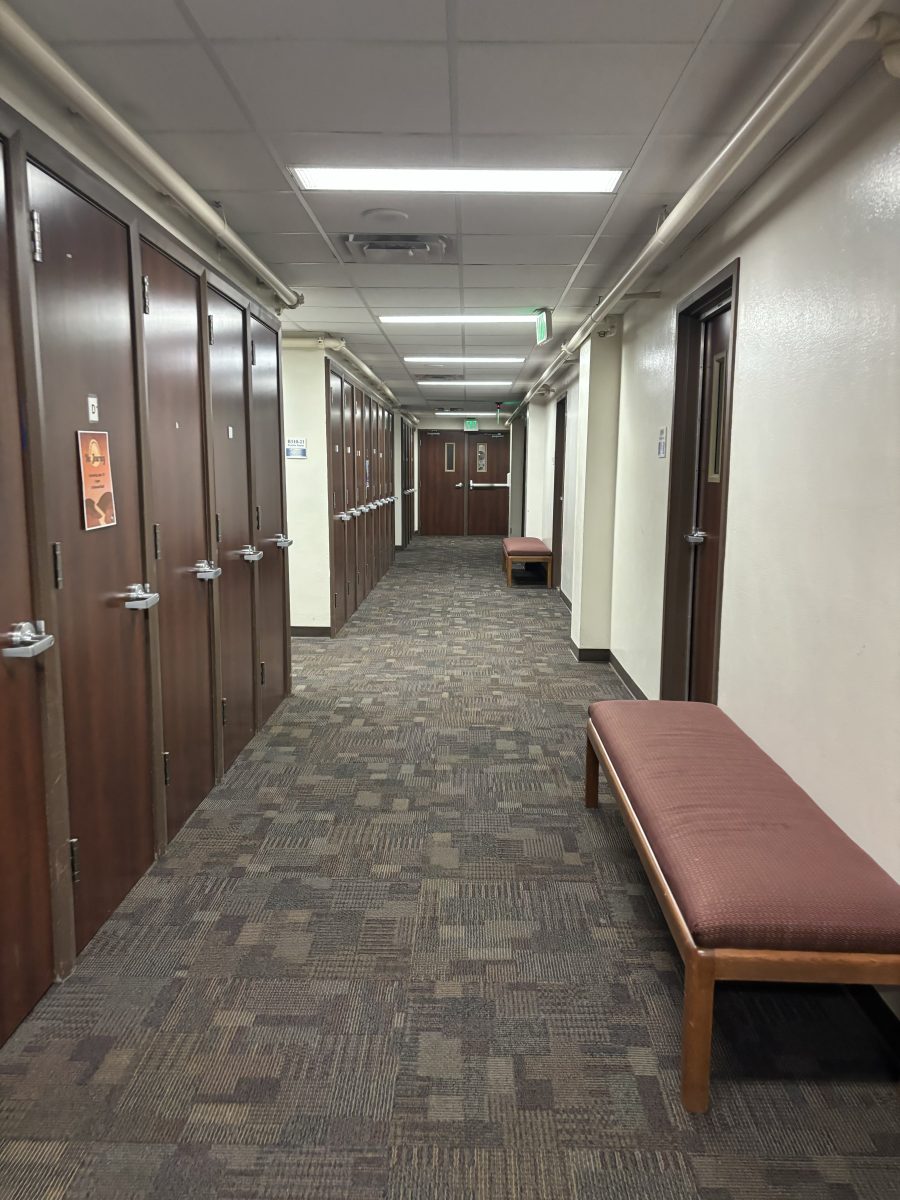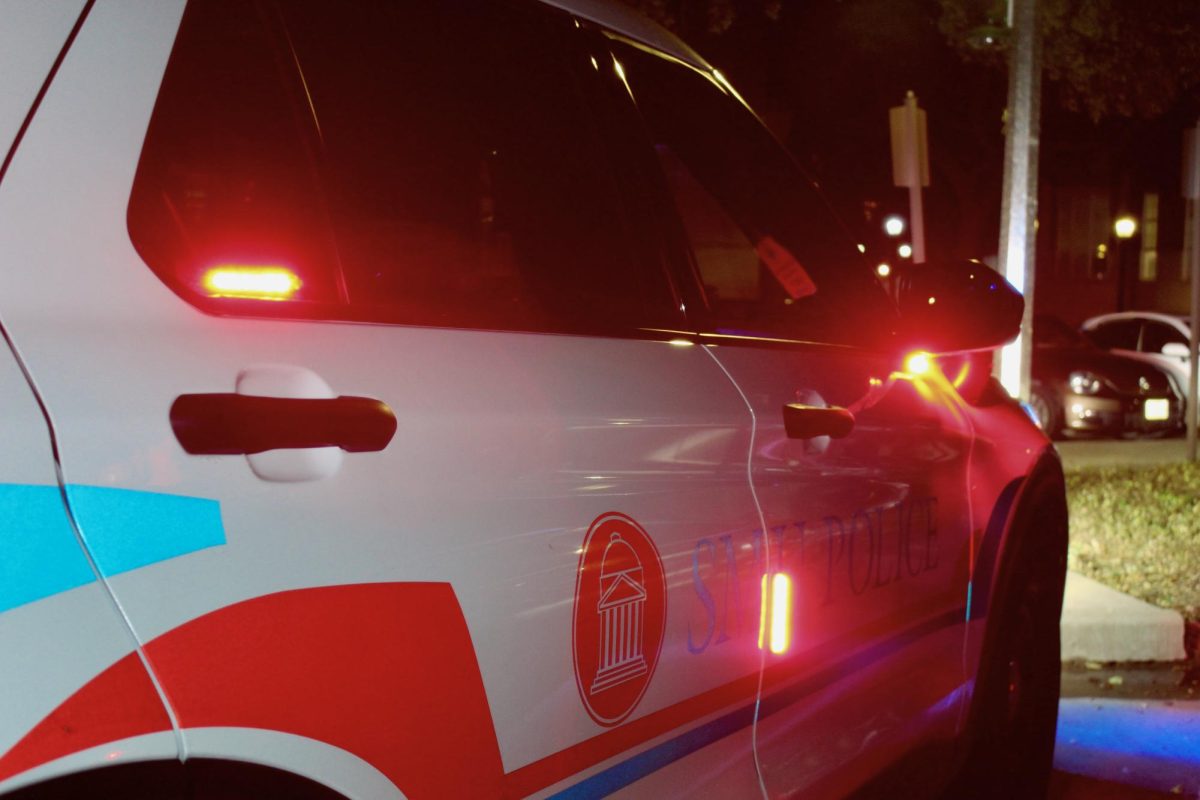
Engrossed in brainstorming ideas, students in an integrated AP English III and American history class at New Tech High School at Coppell huddled together in groups one day recently and spent their entire third period mapping out a six-week long project that aims to answer a complex question:
How do we, as historical reporters, create a newspaper that commemorates the 50th anniversary of JFK’s assassination, as well as inform our audience of the events and periods surrounding the Cold War?
“There are different components of it that include topics like the Berlin Wall, the space race and things like that,” junior Sabrina Sadler said. “At the end, we’ll have a full newspaper with all of this information in different forms.”
There are currently two high schools in the DFW area that operate under the “New Tech” curriculum, which was pioneered by New Technology High School in California. New Tech at Coppell and A. Maceo Smith New Tech High School in Dallas use an emerging educational approach called project-based learning (PBL). This type of instruction fosters problem solving, collaborative skills and student-driven learning by shifting the focus from lectures and tests to lessons that revolve around intensive weeklong projects and presentations, say teachers and other education officials.
“Because of some of the things we know about how people learn, we recognize the importance of changing some of the ways we’re teaching,” Barbara Morganfield, an education professor at Southern Methodist University, said of the PBL method. “We’ve got different levels of learners, so by providing different opportunities and different ways for students to learn material and to give them different opportunities to problem solve and to think critically and collaborate – that tends to show some academic achievement.”
Kim Wootton helped establish New Tech at Coppell six years ago. After spending about two decades in a traditional school setting, she doesn’t think PBL is simply a passing educational fad.
“I certainly think the trend in education moves toward this, but I don’t think it’s a trend that’s going to go away,” Wootton said. “I’ve been in the public education system for 28 years now and I’ve seen people say, ‘Oh, this is a great idea!’ and then you take it back to your district and nothing gets implemented. Our campus was the first to use PBL instruction in our district and now the other campuses use some form of PBL because of what we’ve learned here.”
With its 500-student enrollment cap, throngs of parents try to claim spots for their children at New Tech every year. Most of the children who have been admitted to New Tech have never been exposed to PBL prior to their freshman year. But more and more students, like junior Christine Carroll, have realized that they learn best under this model.
Carroll says she “could not tell anyone” what she learned in middle school, but she can list all the known facts about sodium because of a “tangible” project she did last year.
“We had a speed dating game with different elements and I was assigned sodium, so I can remember that because I had something to connect it to,” Carroll said. “In middle school, they would give me information all day but I’d have no idea why I’m learning it. That would create a disconnect for me because I’ll learn it and I’ll study but I don’t care because I don’t know why I’m learning it. PBL gives a really tangible reason for learning things.”
These tangible projects aim to develop real world skills and give students the opportunity to demonstrate how they understand their class content by producing meaningful output. At New Tech, Spanish II students are learning about Latin American culture by planning a quinceañera; anatomy students are creating and mating their own species; forensics students recreated crime scenes using dollhouses.
“What I’ve noticed is that students are motivated by different things here in our school,” Wootton said. “They’re motivated by wanting to collaborate to produce a product and therefore they retain the information. In the old system, there’s a lot more motivation based on grades and class rank and not so much to learn the information.”
There is a notable shift in classroom dynamics at New Tech. Teachers, who are referred to as “facilitators,” take a step back and primarily monitor student progress. This gives students, referred to as “learners,” the opportunity to take charge of their learning.
“It helps a lot for self-accountability and responsibility because a lot of the time, you just have someone keeping up with you and telling you to turn things in,” junior Megan Moore said. “This is a lot of working on time management and keeping up with stuff, and that helps with being more independent and not having to rely on other people to get work done.”
Wootton says reevaluating her role as a teacher and going from directly imparting information to teaching from the sidelines has benefited her students’ long-term learning. She says her students don’t just sit passively and wait for information to come to them.
“The tag line you always hear is ‘Don’t be the sage on the stage, be the guide on the side,’ and that’s really what we do here,” Wootton said. “They ask me things because they know it’s something they have to produce; therefore, they’re actually listening, paying attention and remembering the information.”
Wootton also says projects and presentations help New Tech students discover more in-depth information about their classroom content compared to the traditional approach of having them read and be tested on chapters out of a textbook.
“I feel like I get the information a lot more than if I were to just read it because I have to present it,” junior Mark Pinciotti said. “I have to know the information; I have to be able to write it; I have to be able to express it. PBL just gives you so many more opportunities to learn rather than just reading or discussing the information in class.”
While medical schools, MBA programs and individual teachers in the U.S. have been using project-based learning methods for years, the education community has recently seen a push for it to be implemented on school- and district-wide levels. In addition to the New Tech schools, a PBL campus in Plano, called Plano ISD Academy High School, just opened its doors this year. Arlington and Duncanville ISD have also started incorporating PBL instruction into individual classrooms.
Although New Tech’s students are thriving under PBL, some educators think it may take a while for it to fully penetrate the education system. Morganfield believes that every single student’s needs should be met in the classroom. Just as the students of New Tech found that they learn best under PBL, many students still learn better with the traditional lecture-based system or other modes of instruction.
“I think one of the mistakes that we can make is to think that this particular methodology is for everybody,” Morganfield said. “If something works for some people, we decide to change it for everybody. I think that we always have to take it back to the learner – what does the learner need? I think we just always have to remember that we have to know who are students are and what they need to be successful.”
Until educators find a way to successfully incorporate different forms of instruction into our public school curriculum, Wootton says New Tech facilitators will continue to learn more about the nature of PBL and instill a sense of trust, respect and accountability in their learners.
“It’s longer hours than I’ve ever put in, but I go home humming everyday because it’s just so darn fun to be here and to stretch their creativity,” Wootton said. “They’re going to be able to take with them skills that are going to help them beyond college. I’ve always told my kids about what to expect when they get into the real world, but they’re already in it here.”
Patricia Villacin is a senior at Southern Methodist University studying journalism and education. She can be reached at [email protected].










